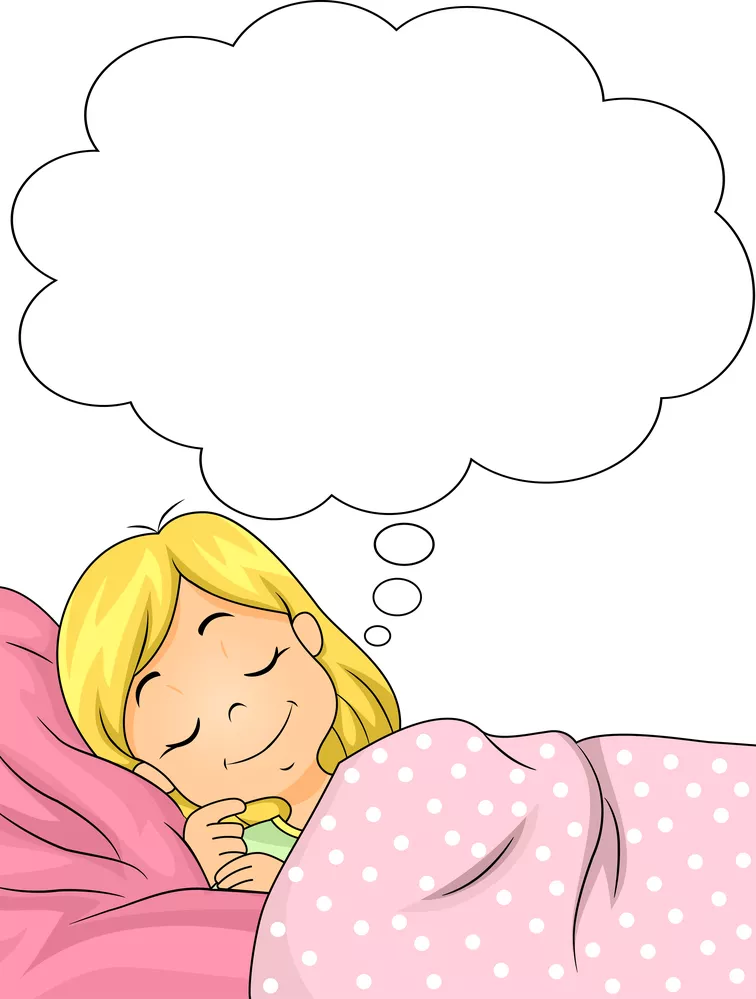Nov 15, 2021
License Depositphotos_17179195_S.jpg
Dreams, according to healthgrades.com, have been a source of joy or dread and everything in between since the beginning of mankind, but what do dreams mean? Occurring during all stages of sleep, a dream is a mental activity involving a series of images, emotions, ideas, and physical feelings that usually occur involuntarily. The stage of sleep when your dream occurred plays a role in what type of dream you have. Here’s what some experts think different types of dreams might mean—and whether it’s worth getting a formal dream analysis.
Sleep stages play a role in the type of dream you have.
Depending on what sleep stage you wake up from when dreaming, you could have a detailed, longer dream or a short, less clear dream. The types of dreams experienced during REM sleep—rapid-eye movement sleep when brain activity increases—tend to be detailed and bizarre with a distinct storyline. If you dream during deep sleep, you’re more likely to have more diffused dreams about color or emotion. At the onset of sleep, dreams typically are simple and shorter than those during deep sleep.
Lucid dreaming means you know you are dreaming.
Occurring during different parts of the sleep cycle—usually when there is a boost in brain activity—a lucid dream is one where you are dreaming but you are aware you are dreaming. For most people, lucid dreams usually occur during REM sleep when the brain is very active. While there is no documented actual cause for lucid dreams and the data is lacking, there are some studies that suggest lucid dreams can help motor skills and/or improve performance.
Vivid dreams are extremely clear and evoke strong emotions.
While we often don’t clearly remember our dreams, vivid dreams are those dreams we can recall in detail as if they are a clear memory. They could be fantastical in nature, or they may have a realistic storyline. Both may leave you waking up feeling joyful, angry or upset.
Factors such as stress, sleep deprivation, sleep disorders, pregnancy and even medication may inspire vivid dreams. Because there are no exhaustive studies, it’s not clear what the function of vivid dreams is, but some experts say they are a natural part of processing emotions, solving problems, and forming memories.
False awakenings feel like you are awake when you actually are still sleeping.
While lucid and vivid dreams can seem very real, false awakenings actually feel as if you are no longer sleeping, but are awake and actively participating in daily routines, such as using the bathroom or preparing breakfast. The reality is you are still asleep in the bed and dreaming. According to a study in the Semantic Scholar, 41% of habitual lucid dreamers say they experience a false awakening dream at least once a month, with 79% stating they had a false awakening in the last month and 41% reporting a false awakening in the last week.
Nightmares are characterized by vivid, terrifying episodes.
Usually occurring during REM sleep, nightmares typically have very vivid and terrifying storylines that end with the dreamer abruptly waking up. Between 5 and 8% of adults have frequent nightmares during REM sleep, according to American Family Physician. That number increases in children between 5 and 12 years of age, with 20 to 30% of children having frequent nightmares during REM sleep.
Although a nightmare doesn’t always mean there is an underlying psychopathology, especially in children, nightmares are a defining symptom of post-traumatic stress disorder (PTSD). They also can occur in patients with psychiatric illness and REM sleep-associated disorders.
What dreams mean depends on whom you ask.
Just as there is no clear data documenting the different types of dreams and what causes each one, there’s no general consensus on what dreams mean. Some neuroscientists say dreams are a side effect of neurological processes, while other researchers say dreams reflect who we are and what we believe.
For instance, dreams about your teeth are thought to reflect concerns over how others see you, while dreams about being chased are thought to suggest you are running from a situation or issue you want to avoid. Dreams about falling are thought to indicate insecurity or anxiety about a current issue.
Having a formal dream interpretation may provide insights—or not.
Again, because there is no clear, substantive data on dreams, their causes and their meanings, having a formal dream analysis can help with dream interpretation—or it may not. According to a 2013 study published in Frontiers, participants in dream interpretation did report a high level of exploration insights, but, because there was no control group, it’s insufficient to determine if dream interpretation provided those insights.
However, dream interpretation and analysis can be an effective therapeutic technique when used as part of therapeutic frameworks, such as psychodynamic theory. Even so, experts agree there remain limitations to using dream interpretation and analysis because there is no standard consensus for what dreams actually mean.
If your dreams are causing problems with your sleep, or if you are experiencing negative events like night terrors, talk to your doctor. He or she can provide guidance on improving sleep quality or, if needed, refer you to a counselor or therapist who can help talk you through stressors or emotions that may be contributing to your dream patterns.
Want a fantastic live psychic reading? Get one at https://starzpsychics.com
Share this article with friends!
Tags:
#dreams,#meaning#of#dreams,#types#of#dreams,#starzpsychics

